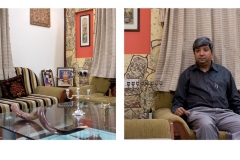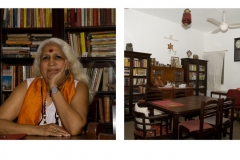Microscopic has been the term most frequently used to describe the Jewish communities in India, for their peak in the early 1950s, the total Jewish population never exceeded thirty thousand in a country which at the time had three hundred million people. And yet, what is remarkable is that India is perhaps the one country in the world where Jews have never been exposed to anti-Semitism or religious persecution at the hands of their hosts, while continuously maintaining their identity. India has, historically, been a refuge and sheltered people of all religions, creeds and beliefs were granted protection and security when they sought it. They were accepted into the fold of the mainstream society and remain Indians. Hinduism, Jainism, Buddhism, Sikhism etc are religions of the land – all were born in India. The central Asian invaders brought Islam. The colonial powers brought Christianity. India remained a large-hearted host to all, enriched its cultural heritage – and became a truly secular nation. People from all communities rose to become eminent citizens of the land. They all lived in the palpable absence of anti-Semitism, a cancer unknown in India.
Indian Jews, a small ethnic community, gradually diminishing in numbers, maintain their cultural identity in an otherwise deeply divided society such as India. Jews are believed to have come to India as long as two thousand years ago and now find themselves divided into different small groups. Being a microscopic endogamous community with strict religious and social traditions, most of the Jews find it difficult to maintain their unique culture and therefore, either acculturated with the larger Indian communities or migrated to foreign countries, mainly Israel. There are now barely five thousand Jews, in an Indian population of approximately nine hundred million in all. But those Indian Jews who still live in India or migrated to other countries, however small their number, struggle to maintain their distinct cultural identity—the Indian Jewish Identity. It describes the beliefs and attitudes, the rituals and histories, which conditioned the identities of these distinct communities of Indian Jews.
Jews of Kochin, before 1947 a princely state and now a port near the southern tip of India on the Arabian Sea. Jews may have come to Kochin as long as two thousand years ago or more, either as traders or as refugees from the Roman sack of Jerusalem. In Kochin they flourished as merchants, agriculturists, soldiers, and in politics- one-seventeenth century Jewish leader was simultaneously prime minister to a Hindu maharaja and trading agent for the Dutch East India Company. The Kochin Jews were mostly prosperous and well positioned in a Hindu society.
The Bene Israel of Maharashtra State, in and around Bombay and Gujarat. But the Bene Israel were in India long before Bombay existed. No one knows when they arrived in India, and they tell of a shipwreck off the Konkan Coast. They lost their books and forgot their Hebrew, became a caste of oil pressers, lost all contact with other Jews and assimilated into Hindu culture. Nevertheless, they maintained vestigial Jewish observances such that they were eventually ‘discovered’ and made their way back into the Jewish mainstream. Most of them moved to Bombay where they became workers, clerks, civil servants and soldiers.
The unique minhagim (local customs or observances of Jewish law) of Indian Jews, developed over more than a millennium, can be understood as the ritual establishment and celebration of Indian Jewish Identity. Judaism’s adaptations to various cultures have gone beyond minhagim.. Like all truly ancient religions, Judaism is extremely complex, comprising diverse threads over centuries and millania. Unique among the world’s religions is Judaism’s diasporisation; Jews have lived as guests – welcome or otherwise – among all people of the world. Since Jewish tradition is so multidimensional, depending upon the Jew’s host culture, differing aspects of Jewishness have come to the fore, and other aspects relegated to the background. Maintaining group identity in the process of transition from one cultural world to another is a challenge which has faced Jews throughout their long history of migration from country to country, from continent to continent.
‘Indian Jewish Identity’ tries to document these vivid and unique aspects of the Jews living in Indias; through their livng spaces.









